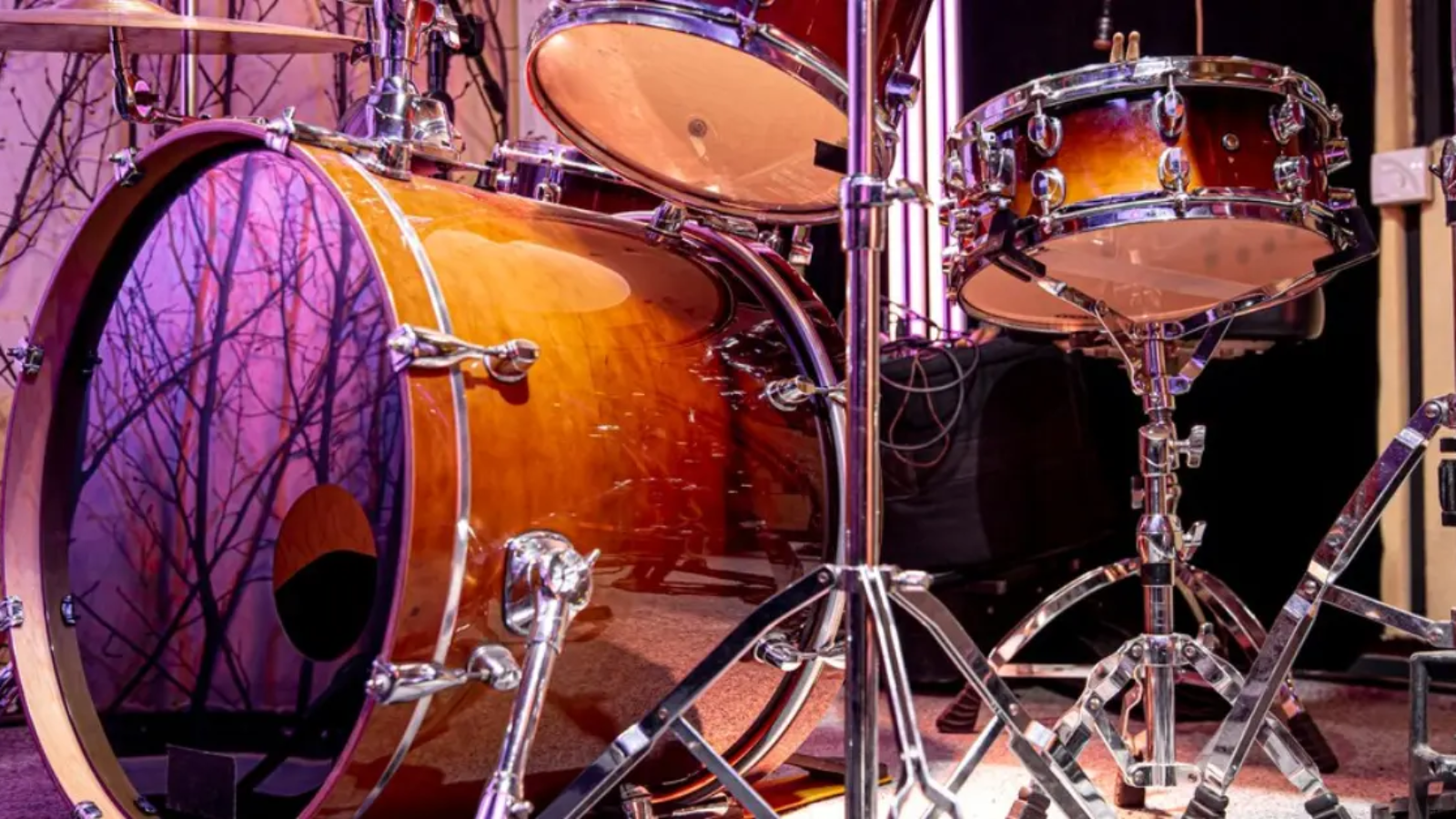Discover Proven Drum Kit Maintenance Tips for Drummers

Whether you’re a passionate beginner or a seasoned pro, owning a drum kit comes with a responsibility that goes beyond playing—proper maintenance. Knowing how to keep your drum kit in top shape not only ensures long-lasting performance but also keeps your sound crisp, dynamic, and expressive. A well-maintained drum kit feels responsive, sounds cleaner, and supports your playing style with more reliability. This guide breaks down the essential maintenance tips every drummer should know to keep their kit sounding and looking its best for years.
1. Regular Dusting and Cleaning of the Shells
Dust and dirt can accumulate on your drum shells over time, dulling their finish and even damaging the wrap or lacquer. Use a soft microfiber cloth to gently wipe the shells after each use. For a deeper clean, dampen the cloth slightly with water or use a drum-safe cleaning solution. Avoid abrasive cleaners or rough cloths that might scratch the surface. Keeping the shells clean preserves both their look and acoustic properties.
2. Wipe Down the Cymbals After Every Session
Cymbals are prone to oil and grime buildup from constant hand contact. Wipe them down with a dry cloth after each session to remove fingerprints and moisture. For thorough cleaning, use a cymbal-safe polish once a month. This not only maintains shine but also ensures your cymbals retain their crisp tone over time. Remember to avoid circular motions that follow the lathing—always clean along the grooves.
3. Tuning Drums Correctly for Consistent Tone
Tuning is a major part of keeping your drum kit in top shape. Learn the art of evenly tensioning the drumhead at all lugs. Use a drum key and tighten in a star pattern to prevent warping. Regularly check tuning on all toms, snare, and kick. When drums are in tune, your playing feels more satisfying and professional, plus it prevents uneven wear on heads and shells.
4. Change Drumheads When Necessary
Old or worn-out drumheads will compromise your tone and responsiveness. For active drummers, batter heads should be replaced every 3–6 months depending on usage, while resonant heads can last longer. Signs you need new heads include visible dents, flaking coating, loss of resonance, or difficulty tuning. Fresh heads revitalize your sound and keep the kit responsive.
5. Clean and Lubricate Hardware Regularly
Drum hardware, including stands, pedals, and mounting systems, must move smoothly to support your playing. Dust and grime can cause friction or rust, leading to sticking parts or broken components. Wipe down metal hardware often, and apply a small amount of lubricant (like WD-40 or silicone spray) to moving joints. Tighten any loose screws or bolts, and check for signs of wear.
6. Keep Your Pedals Responsive and Silent
Kick and hi-hat pedals are some of the most abused parts of your kit. Ensure smooth motion by cleaning the footboard, lubricating the hinge, and checking the spring tension. Avoid squeaky pedals by applying grease to the moving shafts and bushings. Adjust the beater angle and height to match your playing style. Well-maintained pedals will give you speed, power, and precision.
7. Protect the Kit from Extreme Temperatures
Temperature and humidity can significantly affect drum kits. Wooden shells expand and contract with moisture, which may lead to cracking or detuning. Keep your kit in a controlled environment—avoid leaving it in direct sunlight, damp basements, or cars. Use a humidifier or dehumidifier if necessary. Protecting your kit’s environment is just as crucial as maintaining its parts.
8. Use Drum Rugs or Mats to Prevent Slipping
A shifting kit can lead to inconsistent playing and hardware strain. A quality drum rug helps anchor your kit in place, protecting both the instrument and the floor. It also adds a layer of insulation between your bass drum and hard surfaces, reducing unwanted vibrations. Choose a rug with grip texture and size that suits your kit’s footprint.
9. Store Your Kit Properly Between Uses
If you don’t play daily, store your kit with care. Loosen drumheads slightly to relieve tension, cover the shells with cloth to prevent dust, and store cymbals in padded bags or cases. Avoid stacking heavy items on top of the drums. If you break down the kit for storage, label hardware to make reassembly easier.
10. Inspect All Cables and Electronics (for E-Kits)
If you use an electronic drum kit, maintaining cables and triggers is just as vital. Check jack inputs for dust or corrosion, ensure pads are responsive, and replace faulty cables. Clean mesh heads and rubber pads with a soft cloth and avoid using any harsh liquids. Updating firmware and calibrating sensors can also improve your playing response.
11. Use Quality Cases for Transport
When transporting your drum kit, padded cases protect against dents, scratches, and impacts. Hard cases are ideal for touring musicians, while soft gig bags work well for local gigs. Ensure all pieces are securely packed and never leave the kit loose inside a vehicle. Good transport habits preserve the look and life of your kit.
12. Tune and Check Hardware Before Every Gig
Before performing, take time to tune each drum, tighten hardware, and test your pedals and cymbals. Small adjustments beforehand can prevent major issues mid-performance. Keeping a drum key and spare parts in your bag is always smart. A last-minute tune-up ensures your sound stays tight and professional on stage.
13. Replace Cymbal Felts and Sleeves Periodically
Over time, cymbal felts compress and sleeves wear out, potentially leading to keyholing or cracked cymbals. Check these parts often and replace them as needed. High-quality felts and sleeves provide better support and allow cymbals to vibrate freely without damage. This small maintenance step goes a long way in extending cymbal life.
14. Monitor Drumstick Wear to Protect Heads
Worn-out drumsticks can chip and damage drumheads or cymbals. Regularly inspect your sticks for splintering, cracks, or broken tips. Replace damaged sticks promptly to maintain clean tone and protect your gear. Using quality sticks suited to your playing style also helps reduce impact on drumheads and hardware.
15. Clean Bass Drum Hoops and Claws
The bass drum often takes the most weight and pressure. Dirt or rust on the hoops and claws can make it harder to tune and keep the pedal attached. Use a toothbrush and polish to clean the claws, and ensure the hoop is free of cracks or chips. Treating these parts with care prevents breakdowns during critical moments.
16. Address Buzzing or Rattling Sounds Immediately
If you notice buzzing or rattling from your kit, don’t ignore it. It’s often a sign of loose hardware, cracked lugs, or worn components. Carefully isolate the sound and tighten nearby bolts or replace faulty parts. Keeping your kit free from unwanted noise ensures a cleaner, more professional sound in recordings and live sessions.
17. Rotate Drumheads to Extend Life
Some drummers rotate their drumheads periodically to distribute stick impact evenly. Mark the head at the top lug and turn it 90 degrees every couple of weeks. This can reduce concentrated wear and extend the head’s life. It’s a simple trick that keeps heads sounding better for longer.
18. Use Mutes and Pads for Quieter Practice
When practicing at home, use drum mutes or mesh heads to reduce volume. These not only make your practice sessions quieter but also prevent excessive wear on your kit. Practice pads are also useful for working on technique without stressing the full kit. Investing in these accessories protects your gear while improving control.
19. Upgrade When Maintenance Isn’t Enough
Eventually, some parts of your kit may outlive their usefulness. If hardware constantly slips or tuning is impossible, it might be time to upgrade. Knowing how to keep your drum kit in top shape also includes recognizing when to retire old parts. Investing in better gear keeps your playing experience satisfying and inspiring.
20. Keep a Maintenance Log or Checklist
Maintaining a basic checklist or log of what you clean, tune, or replace helps you stay consistent. Note when you changed heads, replaced felts, or cleaned pedals. This habit ensures no part is neglected and allows you to plan timely maintenance rather than reacting to problems.
CONCLUSION
Your drum kit is more than an instrument—it’s a partner in your musical expression. Learning how to keep your drum kit in top shape ensures that it responds to your touch, reflects your style, and delivers the sound you imagine. From cleaning and tuning to replacing worn parts and practicing smart storage, each step contributes to longevity and tone. A well-maintained drum kit doesn’t just sound better—it inspires more practice, better performances, and a deeper connection with your music. Make these tips part of your routine, and your kit will thank you with every beat
.
At NMS Musicals, we offer a comprehensive range of musical instruments, including percussion, string, wind, and keyboard instruments. Our services encompass sales, expert servicing, and the manufacture of leather instruments. Explore our diverse collection and find the perfect instrument to suit your musical needs.
Visit our website to browse our offerings: nmsmusicals.in
For a closer look at our products, check out our shop page: nmsmusicals.in/shop
Stay connected with us through our social media channels:
- Facebook: https://www.facebook.com/nmsmusicalinstruments/
- Instagram: https://www.instagram.com/nmsmusicals/?hl=en
- YouTube: youtube.com/@nmsmusicals
Our shop locations are:
- Puducherry: 149, Perumal Koil Street, Heritage Town, Puducherry, 605001.
Map Link: https://maps.app.goo.gl/ejDwBBFEJmd3szxk7 - Chennai: No: 1, 1st Floor, Kandigai Street, TVS Nagar, Korattur, Chennai – 600076.
Map Link: https://maps.app.goo.gl/7oXmB6X7KQsqeuuw9
For inquiries, contact/Whatsapp us at 9500663895 or email us at laxman.m89@gmail.com.
Discover the world of musical instruments with NMS Musicals today!
For a visual overview of our percussion instruments, watch the following video:


 Cart is empty
Cart is empty 
Leave A Comment
You must be logged in to post a comment